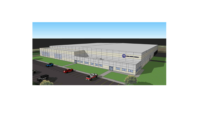“Essentially what we started doing in 1992 is what we’re doing now – just better and on a bigger scale.”
That’s Joe Genova, owner and vice president of Poly Print, a Tucson, Arizona-based printer and laminator of flexible packaging. In fact, in just under 25 years, Poly Print has morphed from a regional flexo printer into a national one. It’s branched out from food and beverage markets to serve everything from pharmaceuticals to consumer products. And it has regularly updated its equipment and acquired new machinery when necessary to better serve its customer base.
Despite the aforementioned changes, Poly Print still very much remains the same. It’s still family-owned and -operated, still customer service driven and it still puts a large emphasis on fast turnaround times and optimum product quality.
Much of Poly Print’s growth can be traced back to one year – 2006.
2006: A Year of Investment
POLY PRINT INC.Location: Tucson, Arizona Plants: 1 (80,000 square feet) ► Watch |
Genova largely credits the investments made a decade ago for where Poly Print is today. It’s when the expansion of the company from a regional business to a national one began, he says.
“We invested in a lot of new equipment,” Genova explains. “We purchased a new printing press, we bought a new laminator, we purchased a new slitter, we purchased a new mounter.”
Poly Print also upgraded its facility, moving out of a 25,000-square-foot building and into a then-new, 77,000-square-foot one.
“We doubled the capacity of the plant, went from printing 6 colors to 10 colors, got into gearless technology,” Genova continues.
But 2006 was just the start of things to come.
Steady Growth and More Investing
Though 2006 was a year of big capital investments and moves, Genova credits 2012 as Poly Print’s true breakout year. That year, he says the company experienced double-digit growth. Things only took off from there. In 2013, Genova says the company experienced over 20 percent growth and over 30 percent growth in 2014.
In 2013 came another round of equipment purchases, this time in the form of a new slitter, laminator and mounter.
“We didn’t buy another press at that point, but we bought everything else to expand our capacity as we were growing quite a bit,” he says.
Aside from investing in the company, it’s Poly Print’s business model that also greatly contributed to its growth. For starters, as a wide web flexo printer, Poly Print is always willing to entertain short runs, which many wide web printers don’t concern themselves with. It’s part of the company’s customer-centric approach.
“Some of our other competitive advantages, being a wide web printer, are our turnaround times,” Genova explains. “We really pride ourselves on fast turnaround. We’re able to be so responsive for a couple of reasons. One is just the size of our company and the way we run the company. We keep well over 1 million pounds of inventory in stock. A lot of printers won’t do that – when you give them an order, they’ll go place orders with their own vendors. We keep it on the floor and that allows us to be very responsive.
“We have a lot of economies of scale because of how we buy and what we purchas. We pass that on to our customers, so our pricing gives us a huge advantage now.”
Additionally, Poly Print is SQF Level 2-certified, which Genova says is a huge advantage for the company – and not just when it comes to dealing with food packaging. Evaluating major waste streams, defining and redefining processes, implementing lean manufacturing throughout each process, honing training techniques and competent staff are the backbone to managing company growth, Genova says.
Present Day and Beyond
As was noted earlier, a large part of Poly Print’s success hinges on its ability to conduct fast runs. That was the motivating factor behind another investment the company made at the end of 2015 in the form of a Totani pouch machine.
“(For) most people, the motive is money right away rather than outsourcing that and paying someone else,” Genova says. “Certainly, that was a huge factor. But the No. 1 factor was so that we could shorten our lead times for pouch applications. Whenever you have to outsource or work with a third party in that sense, your lead times can be somewhat unpredictable. Bringing that capability in house and expanding our market and what we’re willing to do in the standup pouches turned our lead times around immensely.”
Though the company still works with key strategic converting partners on projects, the pouch machine addition is already paying off. Pouch making is also poised for future growth at Poly Print, as its facility is currently arranged to accommodate up to three additional lines.
“With some of the assistance from the manufacturer, along with a dedicated office team and plant staff, we are able to get this (pouch making) operation up and running with success,” says Ron Vukmir, Poly Print’s prepress and production manager. “We are now capable of better servicing our customers along with passing the savings on to our customers by doing pouching now in house versus sending it out to be converted.”
In addition to acquiring a pouch line, Poly Print also added another mounter in January, a new slitter in February and its third printing press – this one a 10-color flexo press – in March. It also has upgrades to the flexo press it acquired in 2006 planned for later this year, an overhaul of the machine that will help it operate similarly to its new 10-color press.
“We’re always inquiring about different things and technologies,” Genova says. “One popular thing is spot matte varnish that goes over the top of the package. We didn’t have the ability to do that before. Our new printing press gives us the ability.”
Adds Dave Bollin, a Southern California sales rep for the company: “The quality of printing over the last decade has improved tremendously. Poly Print has invested in leading-edge technology to keep up with customer demands for high-resolution packaging. This has enabled us to sell to a broader market and compete with overseas rotogravure.”
Poly Print
(520) 792-1061
www.polyprint.com
Video: Inside Poly Print’s Tucson, Arizona Facility








